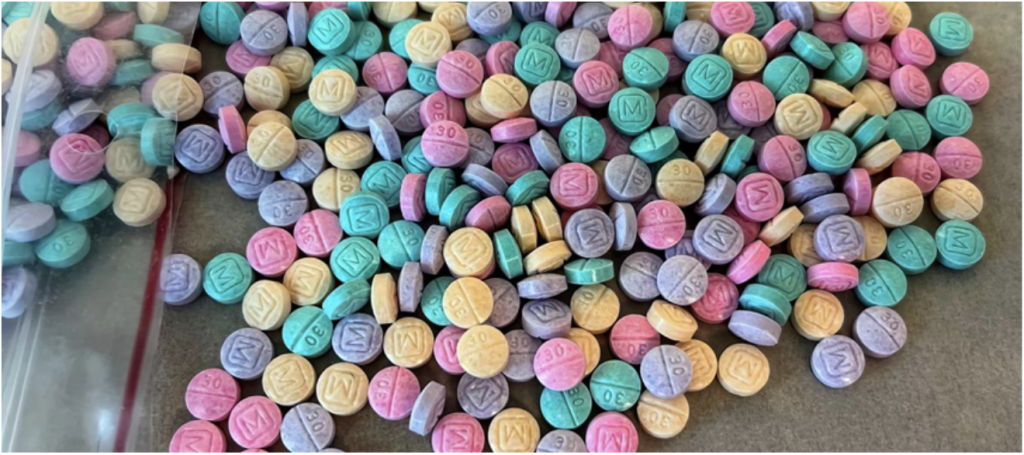In the United States, Florida’s detoxification and rehabilitation facilities are at the forefront of treating patients like Flora, a Miami native. Her descent into addiction began with the opioid oxycodone, prescribed to manage post-surgery pain. “I lost cartilage,” she explains, “which caused a disc in my back to slip out of place, leading to complications like scoliosis, arthritis, and nerve damage.”
One day, feeling that her medication was insufficient, Flora — who requested that her last name not be used to retain her privacy — bought more on the streets. Unbeknownst to her, the pills she purchased were laced with fentanyl — a tragically common scenario amid the fentanyl epidemic. Were it not for a life-saving dose of Narcan, she wouldn’t be here to share her harrowing experience with me. “When I woke up in my room after taking it, I had no sense that time had passed, I felt absolutely nothing except the Narcan shot that saved my life. I was in shock and felt betrayed like someone was trying to murder me with fake drugs.”
Stories like Flora’s are not uncommon. But there is hope for those struggling to survive. “Our approach is abstinence,” says Lester Delgado, director of operations at South Miami Recovery. “We keep our patients accountable with routine drug testing, support their sobriety with a twelve-step program, and treat any comorbid psychiatric conditions.”
He continues, “Unfortunately, based on what I’ve seen, there are a lot of ‘functional’ addicts hiding in plain sight. They don’t seek treatment because they can still keep a job and provide for themselves.”
When it comes to the scourge of narcotics, fentanyl is not your ordinary opioid. While opioids like morphine and codeine are organically derived from the opium poppy plant, predominantly grown in Afghanistan, fentanyl is created using synthetic precursors in a laboratory. This intricate process produces a pain management drug that’s a hundred times more potent than morphine and can be lethal in doses as low as two milligrams — the equivalent of five grains of sand.
“Fentanyl is the single deadliest drug threat our nation has ever encountered,” says Drug Enforcement Administration (DEA) Administrator Anne Milgram, “Fentanyl is everywhere. From large metropolitan areas to rural America, no community is safe from this poison. We must take every opportunity to spread the word to prevent fentanyl-related overdose death and poisonings from claiming scores of American lives every day.”
Despite its classification as a Schedule 2 controlled substance — or perhaps directly because of it — there’s a significant influx of illicit fentanyl from across the U.S.-Mexican border, with many of its precursors and related substances originating primarily from Mexico and China. Canada and India contribute to a lesser extent.
For example, “More than 40 people were arrested [on June 2023] in connection to a massive drug ring responsible for trafficking over 2,300 grams of fentanyl into Central Florida, Volusia County Sheriff Michael Chitwood said in a joint news conference… That’s the equivalent to 1.5 million doses, he said, which is enough fentanyl to wipe out the entire city of San Diego.”
And yet another example, “[On Oct. 2023,] Three Mexican men living in Hillsborough County, [Florida] — two of them in the United States illegally — have been arrested and charged with trafficking in Fentanyl during a multi-agency investigation. Multiple law enforcement agencies collaborated during the investigation resulting in the three arrests and the seizure of 10 kilograms of Fentanyl, [enough to kill 5 million people]. The street value of the 10 kilos of fentanyl is approximately $2,500,000.”

To make matters worse, the DEA is sounding the alarm over rainbow fentanyl, brightly-colored drugs resembling harmless candy but laced with deadly fentanyl. In response to this, a new Florida law, HB 1359, went into effect on Oct. 1, 2023. As Florida Governor Ron DeSantis says, it is written to “impose additional penalties on fentanyl and drug-related crimes targeted at children.”
Discussing the crisis, DeSantis remarked, “Floridians of all walks of life have witnessed the destruction caused by the opioid epidemic across our state.”
Considering herself lucky, Flora says, “After attending many rehabs, I finally found hope and relief by using a medication called Suboxone to manage my pain and addiction, the tools and support of Narcotics Anonymous, which includes sponsorship and daily meetings, and the encouragement of my family to maintain my sobriety for the rest of my life. From feeling cursed, my life became a blessing.”

































